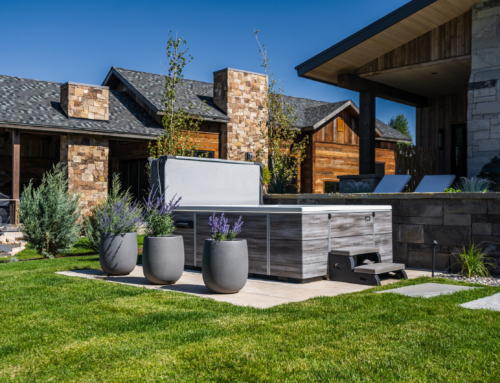Your sales team is the life force of your spa business. In terms of garnering new customers, promoting products, and generating sales, they are on the front lines. As with any team, training is essential to ensure a cohesive and effective unit. One of the biggest misconceptions about sales team training is that it’s a one-time exercise.
In reality, successful training programs are ongoing, constantly reinforcing goals, performance, and customer satisfaction. Use the following tips to improve your sales training method to increase margins and facilitate a unified sales culture.
1. Establish Goals
In order to harness an effective sales team, you need to establish clear, achievable goals for your employees that are equally qualitative as they are quantitative. In other words, you want to create an nurturing environment for your sales staff, one which encourages productivity and self-evaluation over hard numbers and results.
Yes, metrics are important too; but in terms of building a team of unified, self-sufficient sales representatives, you need a common ideology that drives productivity and sales activity.
2. Ask the Right Questions
A critical step in the training process is to get your sales team to ask the right questions. To do this, your team should place themselves in the position of the customer. Encourage them to ask the questions the average customer would have about product benefits and drawbacks. This will help establish an understanding between your sales staff and consumers, facilitating productive conversations that ultimately lead to sales.
Terry Guilfoyle, Director of Sales for Bullfrog Spas, never underestimates the power of smart questions when training his team. “It’s best to use training time for making sure everyone is asking the right questions,” he explains. “Then, when they’re presenting the product, they can focus on the one or two main benefits outlined by manufacturer POP that will resonate with that customer.”
Role playing seems to be the most effective training technique because it gives the staff opportunities to actually practice. ~ Terry Guilfoyle, Bullfrog Spas
3. Hold Daily Sales Meetings
Sales training is ongoing process that should be reinforced on a daily basis–or as Guilfoyle puts it, “If you’re not talking about it, they’re not doing it.” Start each morning with a brief sales meeting, during which you can conduct teambuilding exercises and sales practice. “You absolutely should be training sales staff daily,” Guilfoyle continues. “Role playing seems to be the most effective training technique because it gives the staff opportunities to actually practice. Of course, the more you practice, the better you get.” Additionally, regular training sessions reinforce the core values and objectives of your business, keeping them fresh in minds of your sales staff.
4. Know Your Customer
The demands and behavior of your customers is a critical aspect to any sales effort. One of the most difficult tasks for your sales team is gauging customer response. Even Guilfoyle admits that “most sales are lost in the discovery phase of the sale when you’re learning about your customer.”
As a result, it’s important to spend time anticipating and understanding consumer behavior. What are your customers looking for in a spa product? Which benefits appeal most? What drawbacks are likely to turn customers away? Speaking with Pool and Spa News, Robby Hauk, CEO of Hauk Custom Pools, espouses the advantages of consumer feedback in his sales training. He writes, “Based on feedback from customers, we do full summaries with our sales staff of what products work and what don’t work.”
5. Focus on Customer Satisfaction
For Cyndi Blessing, Retail Manager of Bullfrog Spas Factory Store in Bluffdale, UT, promoting customer satisfaction is a large part of her sale training process. “A lot of times we use our sales meetings for pointing out improvements we can make to improve customer satisfaction,” she writes. “Sometimes this is about processes like ordering and delivery. Almost all of the time though, it has something to do with communication.”
In gearing your training process toward customer satisfaction, you can implement sales strategies that speak to consumers.
In gearing your training process toward customer satisfaction, you can implement sales strategies that speak to consumers. Your training can encourage positive communication with your customers that helps your business gain insight into the mind of the consumer.
6. Encourage Activity Over Results
While numbers are extremely important in sales, they are not everything. At the end of the day, customers are either going to purchase a spa or move on. More important than pushing for more closed sales is encouraging sales activity. One of the goals of your sales team should be to engage as many prospective leads as possible rather than chasing down customers who were unlikely to purchase from the start.
7. Monitor Performance
You already use metrics to evaluate overall sales performance in your business, but they may only be limited to your revenue stream. To get the most out of your sales team training, you need ways to measure performance levels throughout the sales process.
Effective metrics should provide insight that looks both forward and back. To manage an effective sales team, create a system of measurement that monitors employee activity rather than simple sales numbers, which provides only part of the picture. For example, you can track the number of successful sales calls or lead generations.
8. Facilitate Accountability and Autonomy
When you stop paying attention to your sales team, your sales inevitably decrease. No matter how extensive your training program is, if left unchecked, your employees can develop bad habits. It’s important to devote regular one-on-one sessions with every member of your sales team, checking in on their progress and effectiveness. Through frequent accountability, you can identify weak spots in sales culture before they affect the bottom line.
Through frequent accountability, you can identify weak spots in sales culture before they affect the bottom line.
Furthermore, regular accountability builds trust and encourage autonomy among your staff. They have more incentive to perform better and reevaluate their sales practices on their own.
9. Take Advantage of Outside Resources
Granted, not all hot tub retailers have the budget to enroll their teams into professional sales training programs; however, there are training resources that are affordable and beneficial for small businesses. There are many online courses available, many of which are low-cost or even free, that can prove invaluable to your business. One of the greatest advantages of off-site training includes an environment free of workplace distraction.
To use outside help effectively, you need to identify specific areas of improvement. Remember, your business has unique sales goals that aren’t always addressed in an off-site program. These objectives can only be achieved through in-house training.
10. Motivate With Rewards
Finally, to motivate your sales team, implement a rewards system for your most successful employees. These can include annual financial incentives for top-performing salespersons, as well as non-monetary recognition. It’s vital to provide regular encouragement to keep your team motivated. This will help both successful salespersons excel and encourage underperformers to reevaluate their tactics.
Sales training is not a finite process. It is constantly evolving with the needs and behaviors of your customers, the economy, and your goals. The key to an effective sales training program is consistent reinforcement paired with comprehensive metrics and employee encouragement. Nothing in the retail business is stagnant, and neither is your sales training strategy.








Leave A Comment